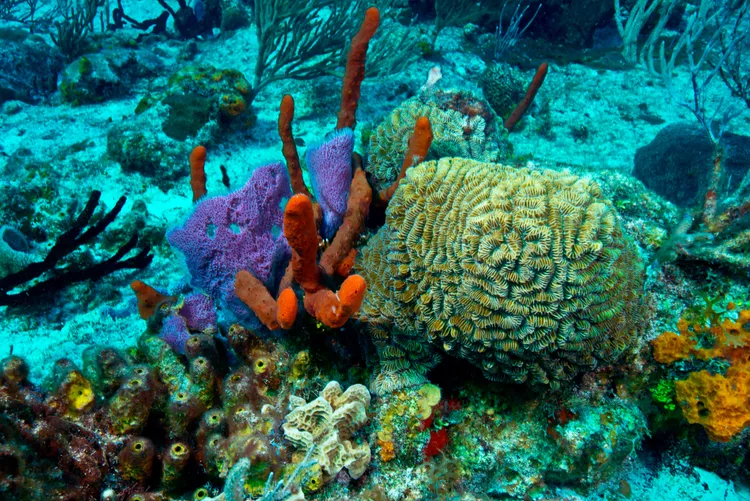Overview of the Mesoamerican Barrier Reef
- Location and Significance: The Mesoamerican Barrier Reef System is the second largest barrier reef globally.
- Visiting Opportunities: Prime destinations for diving and snorkeling include Cancun and the Riviera Maya.
- Environmental Challenges: The reef faces threats from both natural events and human activities.
- Conservation Efforts: Projects like artificial reefs are being developed to protect this vital ecosystem.
One of the largest coral reefs in the world, the Mesoamerican Barrier Reef System, also known as the Mesoamerican Reef or Great Mayan Reef, extends more than 600 miles from Isla Contoy at the northern tip of Mexico’s Yucatan Peninsula to the Bay Islands in Honduras. The reef system comprises various protected areas and parks, including the Arrecifes de Cozumel National Park, Sian Ka’an Biosphere Reserve, Arrecifes de Xcalak National Park, and the Cayos Cochinos Marine Park.
How to Visit the Mesoamerican Barrier Reef
Surpassed only by the Great Barrier Reef in Australia, the Mesoamerican Barrier Reef is the second largest barrier reef in the world and the largest coral reef in the Western Hemisphere. A barrier reef is characterized by being in close proximity and extending parallel to a shoreline, with a deep lagoon situated between it and the land. The Mesoamerican Reef hosts more than 66 species of stony corals and over 500 species of fish, as well as various species of sea turtles, manatees, dolphins, and whale sharks.
The location of the Mesoamerican Barrier Reef—just off the coast from Cancun, the Riviera Maya, and the Costa Maya—makes these prime spots for those interested in scuba diving and snorkeling during their vacation. Notable dive locations encompass Manchones Reef, Cancun’s Underwater Museum, and the C58 Shipwreck. To maximize your dive experience, it’s advisable to refresh your diving skills before venturing to the Yucatan Peninsula.
Understanding the Mesoamerican Barrier Reef’s Ecosystem
The coral reef forms just one element of a broader ecosystem that includes mangrove forests, lagoons, and coastal wetlands. Each of these components plays a crucial role in preserving the overall health of the environment. The mangrove forests act as a protective buffer, preventing land-based pollution from entering the ocean. Additionally, these forests serve as nurseries for reef fish and provide essential feeding and foraging habitats for a variety of marine species.
However, this intricate ecosystem faces numerous threats. Some challenges stem from natural phenomena, such as tropical storms, while others arise from human activities like overfishing and pollution. Unfortunately, coastal development often compromises the mangrove forests vital for the health of the reef. Fortunately, some accommodations are taking significant strides to preserve the mangroves and the local ecosystem.
Environmental Projects to Protect the Mesoamerican Barrier Reef
One notable initiative aimed at protecting the Mesoamerican Barrier Reef is the construction of an artificial reef. Launched in 2014, this large-scale environmental project involved placing around 800 hollow pyramidal structures made of cement and micro silica on the ocean floor near Puerto Morelos. This artificial reef is believed to help safeguard the coastline from erosion. The structures are designed to be environmentally friendly, encouraging the growth of new natural reefs and aiding in regenerating the ecosystem. Known as Kan Kanán, this project is heralded as “The Guardian of the Caribbean” and spans 1.9 km, making it the longest artificial reef in the world. When viewed from above, the layout of the artificial reef resembles a serpent.





